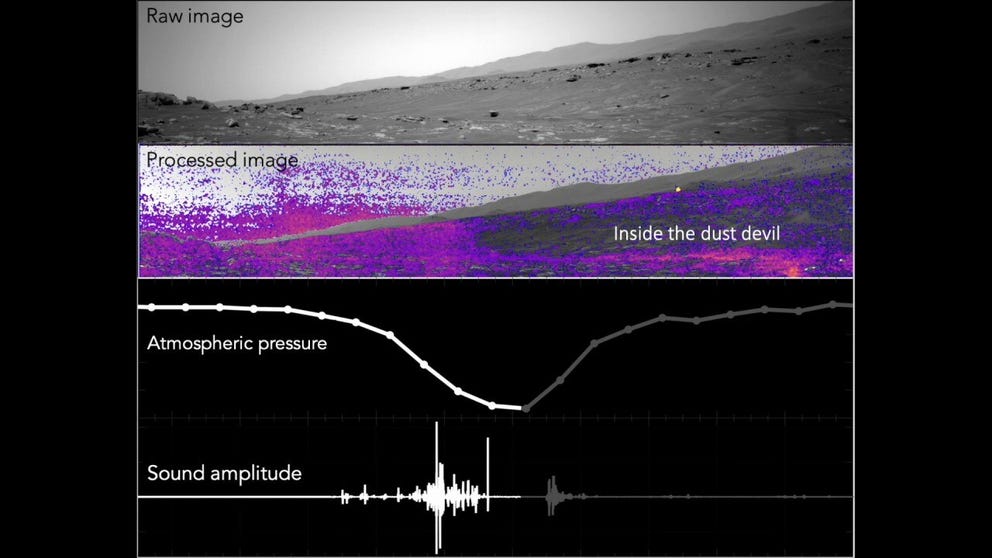Listen to a Martian dust devil: The first recording ever could be the key to future missions
The amount of data scientists could collect from the sound of a Martian dust devil may be a game changer for understanding the red planet’s weather, climate and risk to missions.
Listen to a Martian dust devil
Scientist just released the first audio recording of a dust devil on Mars. They verified that the sound was a dust devil through weather and video monitoring. The loop begins when the vortex is about 175 feet away from the rover. Video shows the scene inside the dust devil while the atmospheric pressure drops.
For the very first time, scientists captured the sound of a Martian dust devil. By chance, NASA’s Perseverance Mars rover had its SuperCam instrument microphone, weather monitoring equipment and camera recording as a dust devil passed overhead.
The amount of data scientists could collect from the sound may be a game changer for understanding the red planet’s weather, climate and risk to missions.
"We were all extremely excited when we realized we’d finally captured the sound of a dust devil," said Naomi Murdoch, Planetary Scientist and part of the team that built the SuperCam microphone.
Then scientists took a closer look and listened. Because the microphone was so sensitive, the team could detect individual particles hitting the rover. That means scientists can now count the number of dust particles in the vortex to understand how much dust is lifting and moving.
WITNESSING DUST DEVILS: NASA'S ROVER BRINGS NEW MEANING TO MARTIAN DUST STORMS
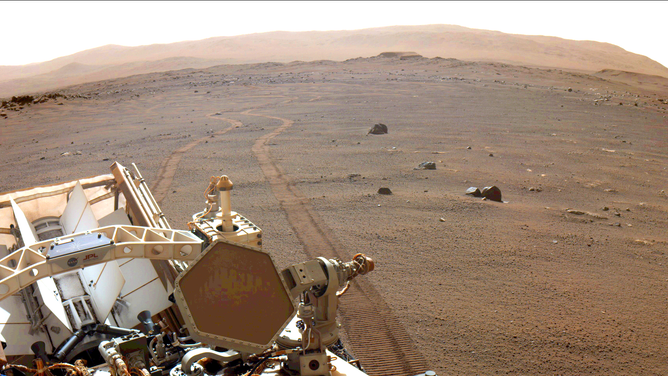
NASA’s Perseverance Mars rover looks back at its wheel tracks on March 17, 2022, the 381st Martian day, or sol, of the mission.
(NASA/JPL-Caltech / NASA)
"This is a completely new measurement on Mars," said Murdoch. "With this microphone recording, we have demonstrated that sound recordings can be used to directly observe dust transport, a key element of improving our understanding of dust lifting and dust storms."
She continued, "Understanding dust lifting is critical for space missions on Mars."
Dust lifting, especially of larger particles in a dust devil or just by wind, damages equipment. Already, dust aloft damaged Perseverance's wind sensors.
FATE OF SEISMIC AND WEATHER MONITORING ON MARS DEPENDS ON DUST DEVIL
"We have been surprised in the past at just how much dust is lofted easily into the air by the wind and by dust devils," she said." Despite the very low-density Martian atmosphere, surface pressure is around 150 times lower than on Earth, the wind at Jezero is very efficient at picking up and moving Martian dust."
The rover landed on the red planet in February 2021 with the SuperCam microphone after a July 2020 launch. The unit in the Jezero Crater captured dust devils on camera and winds on the microphone but never a dust devil direct hit.
NASA'S MARS PERSEVERANCE ROVER FINDS DIVERSITY, HINTS OF MICROBIAL LIFE IN ANCIENT LAKE BED ROCKS
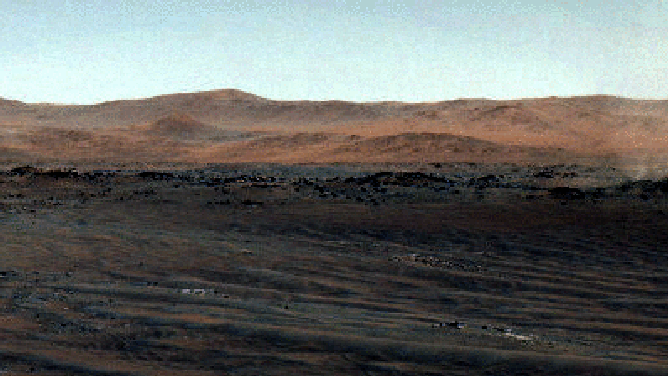
NASA’s Perseverance Mars rover used one of its navigation cameras to capture these dust devils swirling across Jezero Crater on July 20, 2021.
Right now, it is still a mystery as to why dust lifts so easily at Jezero. In other areas of Mars, like the landing site of the NASA InSight mission, the dust rarely lifts, Murdoch said.
"Dust plays a vital role in the overall Martian atmosphere. The cycle of dust in the sky on Mars: lifting, transport and settling actually forms a similar role to the water cycle on Earth, affecting the overall weather systems," explained Murdoch. "However, current models of global Martian dust storms fail to correctly capture dust storm activity."
The team verified that they caught the dust devil when weather instruments measured a drop in atmospheric pressure and a change in wind direction, which coincided with the sound recording and enhanced video.
"In the audio, we can hear two periods of the low-frequency wind as the dust devil leading and trailing walls pass over the rover, with a very calm period in between when the rover is right in the eye of the vortex," Murdoch interpreted the audio recording mapped above.
SAMPLES FROM PERSEVERANCE'S MISSION ON MARS WON'T REACH EARTH UNTIL AT LEAST 2033
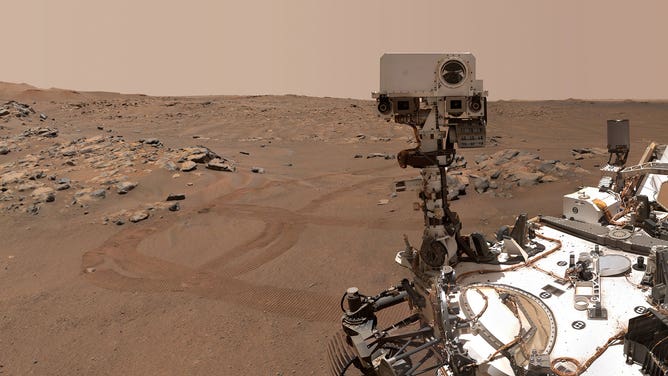
NASA’s Perseverance Mars rover took this selfie over a rock nicknamed "Rochette," on Sept. 10, 2021, the 198th Martian day, or sol of the mission.
(NASA/JPL-Caltech/MSSS / NASA)
The team determined that the storm was 10 times the rover's size. The vortex reached 387 feet high with a diameter of 82 feet. Maximum wind speeds peaked at 25 mph, and it traveled around 12 mph.
"We always hoped that we would be able to record the sounds of a Martian dust devil, but we knew that the chances were slim," she said. "We actually estimated that there is only a 1 in 200 chance of observing, with microphone recording, a dust devil any one midday. So this was definitely a lucky encounter."
Dust devils are more abundant on Mars than on Earth. Due to the low density of the atmosphere, Murdoch says that daytime conditions are more unstable.
The phenomenon happens on Mars the same way it happens on Earth. Warm air from the sun-heated ground rises and sometimes starts to rotate due to different wind speeds at different heights of the atmosphere.
HOLD ONTO YOUR HATS: GIANT DUST DEVIL SWEEPS ACROSS ARKANSAS FARM
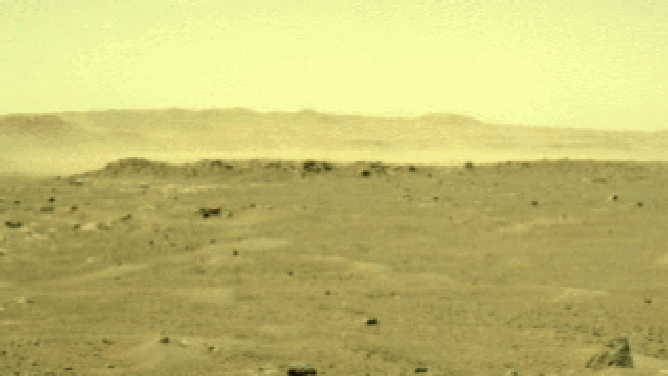
This series of images from a navigation camera aboard NASA’s Perseverance rover shows a gust of wind sweeping dust across the Martian plain on June 18, 2021.
(NASA/JPL-Caltech/MSSS / NASA)
HOW TO WATCH FOX WEATHER ON TV
"On Mars, dust devils can reach extreme sizes like diameters of several hundred of meters, and kilometers high," she said.
"One thing to remember though is that the atmosphere on Mars is much thinner than on Earth, only 6 millibars of pressure at the surface," she said, comparing the number to standard sea level pressure on Earth’s surface of 1013.2 millibars.
"This means that, even if the wind speed is high, due to the small number of gas particles in the Martian atmosphere, the force of the wind is much smaller than on Earth," she continued.
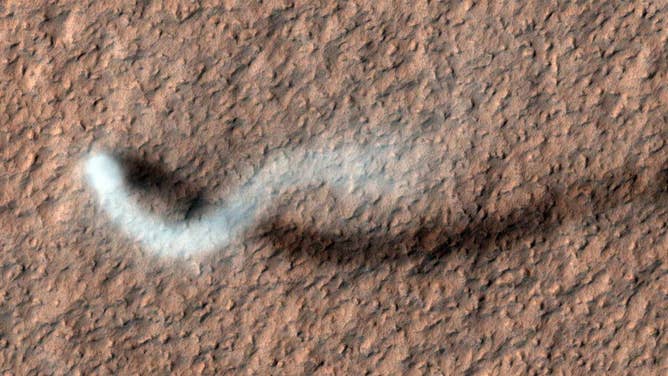
A towering dust devil casts a serpentine shadow over the Martian surface in this image from NASA Mars Reconnaissance Orbiter.
(NASA/JPL-Caltech/Univ. of Arizona)
Murdoch and her peers just released the findings of a study. The dust devil was recorded on September 27, 2021, the 215th sol (Martian day) of the mission. One Mars year equals 2 Earth years. NASA’s mission is to spend at least 1 Martian year exploring the landing site region.
Perseverance is the fifth rover NASA has sent to Mars. NASA intends to send astronauts to the planet in the 2030s.
